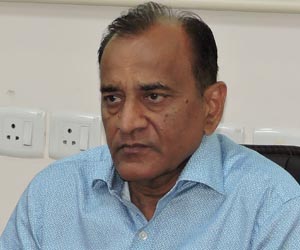Two interesting bits of news filtered in towards the close of the 2024 Lok Sabha elections. One, was that an attempt to influence the polls through the misuse of artificial intelligence by a foreign agency had been foiled. And two, was that an organisation had red-flagged an elaborate plot to promote negative perceptions about India and Prime Minister Narendra Modi internationally. It is for probe agencies to determine—if they wish to—the scheming. What is important to note is the response that these two issues triggered.
OpenAI, the creator of the popular ChatGPT, claimed that it had spotted a conspiracy to deceptively use artificial intelligence to spread misinformation in the midst of the elections. OpenAI named an Israeli political campaign management firm, STOIC, as being behind the game. It also added that prompt action had been taken to preempt the covert operation which, among other things, had begun to generate lopsided content on the elections and the conflict in the Gaza region.
OpenAI said in a statement that STOIC had engineered the spread of critical comments on the ruling party and praise for the main opposition party, but the systematic campaign had been disrupted ‘hours after it began.’ OpenAI banned several accounts originating from Israel—these accounts were spread across social media platforms such as X, Facebook, Instagram, YouTube and various websites. The target audiences of the disinformation material were in Canada, the United States of America and Israel, and the content was both in English and Hebrew.
The STOIC matter was picked up by sections of the Indian media, both print and electronic, and discussed for a couple of days. A central minister responded to it and stated that the deliberate spread of misinformation posed ‘a dangerous threat to our democracy,’ and that the matter needed to be ‘deeply scrutinised, investigated and exposed.’ On its part, OpenAI stated that it was ‘committed to developing safe AI, enforcing policies preventing abuse, and improving transparency around AI-generated content.’ It also claimed that over the past few months, it had identified and disrupted five ‘covert IO [influence operations].’
Barring exceptions, however, the media, both Indian and Western, gave little coverage to this disturbing development. No analytical or investigative reporting happened. There was no writing that sought to uncover STOIC’s antecedents or credentials. No questions were asked on who had generated the social media accounts which, in an orchestrated manner, conducted its activities before the posts was sighted and stopped. That the material was also in Hebrew, meant that people were determined to poison the minds of Israelis too, who have friendly, strong and traditional links with the Indians. It crossed no one’s mind to point out that the choice of countries for an audience was also deliberate. Both the United States of America and Canada house a strong section of anti-India and pro-Khalistan elements; they also have a cottage industry that produces anti-BJP and particularly anti-Modi material by the tonne.
But the ‘independent’ Western (and chiefly the US) media was quick to react to the other development: that of a report by an organisation which exposed the activities by sections within outside India to malign the image of the ruling party and Prime Minister. Here, we are referring to a series of reports by DisInfo Lab; the outfit has been bringing out material in the public domain on the subject since at least 2020. DisInfo Labs’ dossiers and social media posts have exposed the roles of organisations and individuals in the US in targeting India and Modi.
According to its website, DisInfo Lab is in the business of ‘unveiling fake news and propaganda that intend to create turmoil among people,’ and ‘decoding the pattern.’ It uses digital media and social media campaigns to meet its objectives. Nearly all of its activities are concentrated in countering malicious propaganda against India. But the Western media has a problem with that, and for two main reasons (although it does not say in so many words). One, DisInfo Lab is India-based. And two, it does not trash either Modi or India. Merely because the outfit operates from India, makes it non-credible in the eyes of the Western Press. The foreign media has no problems in lapping up content generated by the likes of Freedom Press or V-Dem, even if some of their indices on India are laughable. Besides, any organisation that backs Prime Minister Modi or extols the virtues of India (its civilisational history and economic progress) should be viewed, according to the Western media, with suspicion.
Not surprisingly, therefore, instead of independently cross-checking the claims made by DisInfo Lab, the like of The Washington Post have chosen to question the outfit’s credentials. It says: ‘The Disinfo Lab has combined fact-based research with unsubstantiated claims to paint U.S. government figures, researchers, humanitarian groups and Indian American rights activists as part of a conspiracy, purportedly led by global Islamic groups and billionaire George Soros, to undermine India.’
But the Soros-led drive against India and Modi has been proven, with Soros himself admitting to it with much pride. His China links have been extensively written about. And, just before India successfully hosted the G-20 summit, the Soros-led dirty tricks department raised doubts about India’s economic revival and democratic credentials by floating all sorts of misleading data. Russia banned two Soros foundations from disbursing grants, because he was playing dirty there as well. A billionaire, Soros has the resources to push his agenda in other countries, and with those resources he finds ready local partners to do the needful. That is true of India as well.
Yet, instead of raising hard questions over Soros’s intentions on India, The Washington Post turned its ire on DisInfo Lab. Saying that the organisation had been set up by an Indian intelligence officer ‘to research and discredit foreign critics of the Modi government,’ the Post report further noted that the ‘organisation’s material is among the most widely circulated by right-wing Indians and Hindu nationalists.’ (How could the sentence be complete without a mention of ‘Hindu nationalist’!)
One tested method by the Western media to add credibility to its criticism of what it does not like about India or its leaders, is to seek quotes from ‘eminent’ Indians or Indian-origin people in high academic office. In this case too, the newspaper report quoted Sumit Ganguly of Indiana University at Bloomington. Ganguly says that undermining foreign governments was normal work for intelligence agencies. Of course, he did not, keeping the sensibilities of the Western audience he was apparently addressing, refer to the interferences of Western agencies (the CIA in particular)—the list of which is very long, covering Iraq to Syria to Guatemala to Cuba to Indonesia, etc.
But Ganguly grimly stated that if Indian intelligence officials were ‘besmirching American critics and civil society organisations,’ and that this ‘would be crossing a line reminiscent of KGB tactics during the Cold War.’
It would, however, be unfair to single out Sumit Ganguly. There is an entire ecosystem out there is the Western academia, a very formidable one at that and funded by elements whose interests are taken care of by the research papers and journals that the academia churns out. Rajiv Malhotra and Vijaya Viswanathan have in their extensively researched book, Snakes in the Ganga, exposed the game.
Returning to DisInfo Lab and OpenAI, it would do credit to Indian commentators if they did not parrot their Western counterparts and, instead, focus on the real crisis that the false narratives create for India.
(The paper is the author’s individual scholastic articulation. The author certifies that the article/paper is original in content, unpublished and it has not been submitted for publication/web upload elsewhere, and that the facts and figures quoted are duly referenced, as needed, and are believed to be correct). (The paper does not necessarily represent the organisational stance... More >>
Image Source: https://media.licdn.com/dms/image/D5612AQEg4DfwBmmEmQ/article-cover_image-shrink_720_1280/0/1704286065702?e=2147483647&v=beta&t=lsCOuM0b8KhI1sA-mcofSDHfQehGBejaG7jtTwd2B1I











Post new comment